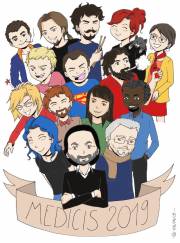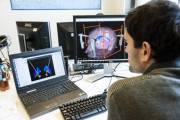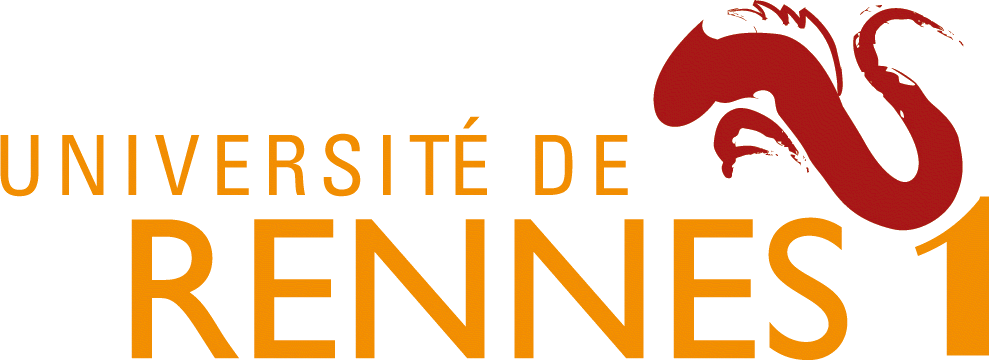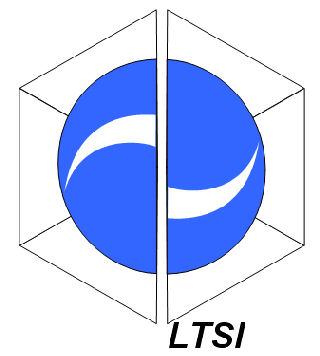News
Members
Publications
Software / Data
Job offers
Images / Videos
Collaborations
Conferences
Lab meetings: "Les partages de midi"
Practical information
Members Area
Next conferences we are in …





This shows you the differences between two versions of the page.
| Both sides previous revision Previous revision Next revision | Previous revision Next revision Both sides next revision | ||
|
activities:theme3:projects:semantic-annotation:index [2010/11/18 17:51] flalys |
activities:theme3:projects:semantic-annotation:index [2015/01/21 17:15] gibaud |
||
|---|---|---|---|
| Line 17: | Line 17: | ||
| ====== Description ====== | ====== Description ====== | ||
| + | ===== Connections within the central area ===== | ||
| + | |||
| In a preliminary phase of the project (Master student work of Elsa Magro in 2010) we investigated in a population of 20 healthy subjects the connections within the central area, based on a ROI parcellation deduced from the sulcal folds (figure 1). | In a preliminary phase of the project (Master student work of Elsa Magro in 2010) we investigated in a population of 20 healthy subjects the connections within the central area, based on a ROI parcellation deduced from the sulcal folds (figure 1). | ||
| Line 30: | Line 32: | ||
| \\ | \\ | ||
| \\ | \\ | ||
| - | In the following of the project we are going to propose new methods to jointly annotate regions of the brain cortex and fiber bundles connecting them, based on a prior knowledge embedded in an ontology. | + | |
| + | ===== Ontology-based approach for in vivo human connectomics: the medial Brodmann area 6 case study ===== | ||
| + | |||
| + | In the following of the project we propose an ontology called "Human Connectomics Ontology" (HCO) and we show how it can be used to annotate in vivo human connectomics datasets. This ontology is an extension of the Foundational Model of Anatomy (FMA), specifically designed to represent structural connectivity imaged by diffusion tractography. It includes a subset of FMA, called Neuro-DL-FMA, built from several lists of brain anatomical structures: (1) the Freesurfer cortical regions (Desikan et al. 2006), (2) the white matter bundles of the JHU white matter tractography atlas (Wakana et al. 2007) and (3) a list of subcortical and hippocampal structures. In Neuro-DL-FMA, the original object properties (such as fma:regional_part_of and fma:constitutional_part_of) - originally represented at the individuals' level - were translated at the classes' level (using existential restriction axioms). | ||
| + | The HCO ontology introduces several classes and object properties to denote entities that participate in structural connections reconstructed by diffusion tractography, namely: | ||
| + | * Class hco:Gray_matter_part | ||
| + | * Class hco:White_matter_part | ||
| + | * Class hco:MR_node | ||
| + | * Class hco:MR_route | ||
| + | * Object property : hco:tracto_connects / hco:is_tracto_connected (inverse property) | ||
| + | * Object property : hco:mr_connection | ||
| + | * Object property : hco:continuous_with | ||
| + | |||
| + | {{:activities:theme3:projects:semantic-annotation:ontology-files-for-hco.zip|"zip with ontology files"}} | ||
| + | |||
| + | Experiments have been conducted to show how HCO could assist in analyzing real connectomics patterns. The following annotation files describe connectomics datasets describing connections in the right medial Brodmann Area 6 in five healthy subjects. | ||
| + | |||
| + | {{:activities:theme3:projects:semantic-annotation:subject01-hco.owl.zip|"subject 1 annotation file"}} | ||
| + | |||
| + | {{:activities:theme3:projects:semantic-annotation:subject02-hco.owl.zip|"subject 2 annotation file"}} | ||
| + | |||
| + | {{:activities:theme3:projects:semantic-annotation:subject03-hco.owl.zip|"subject 3 annotation file"}} | ||
| + | |||
| + | {{:activities:theme3:projects:semantic-annotation:subject04-hco.owl.zip|"subject 4 annotation file"}} | ||
| + | |||
| + | {{:activities:theme3:projects:semantic-annotation:subject05-hco.owl.zip|"subject 5 annotation file"}} | ||


